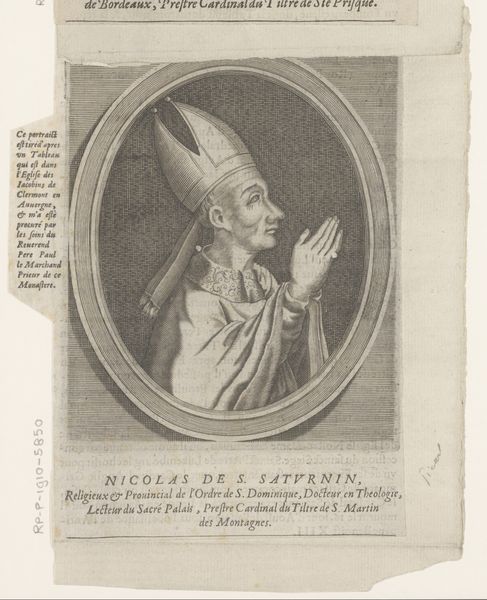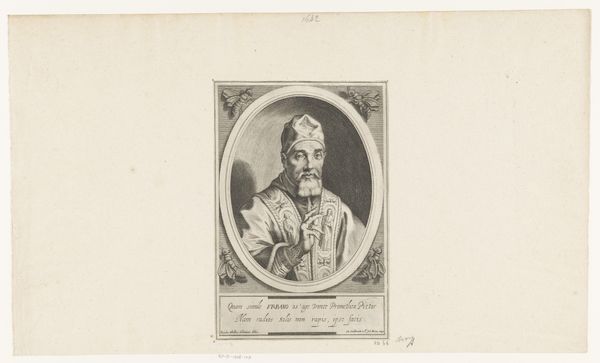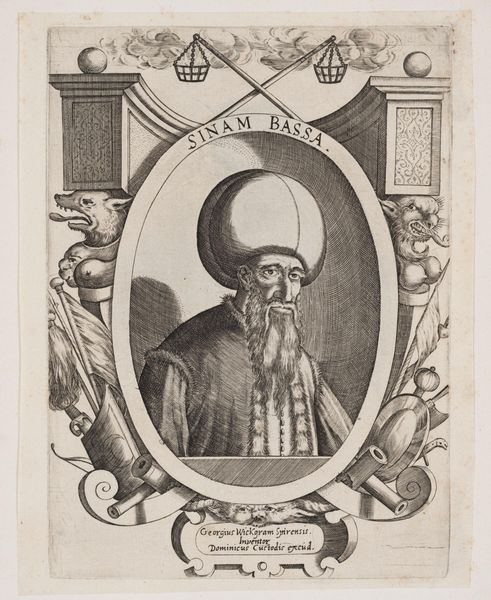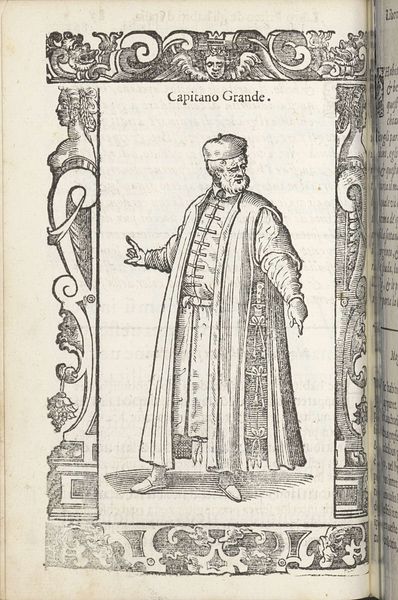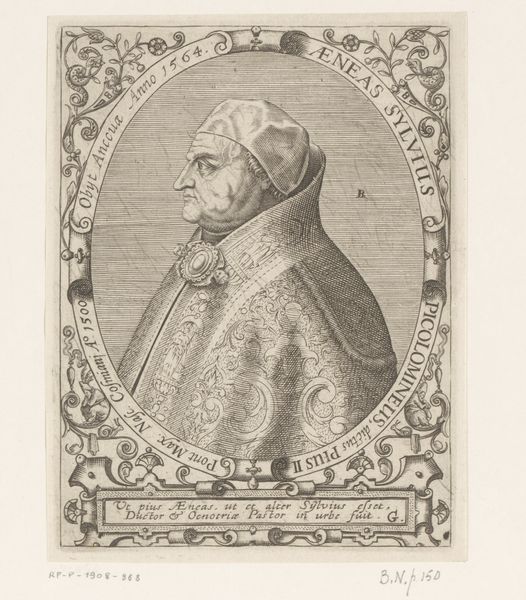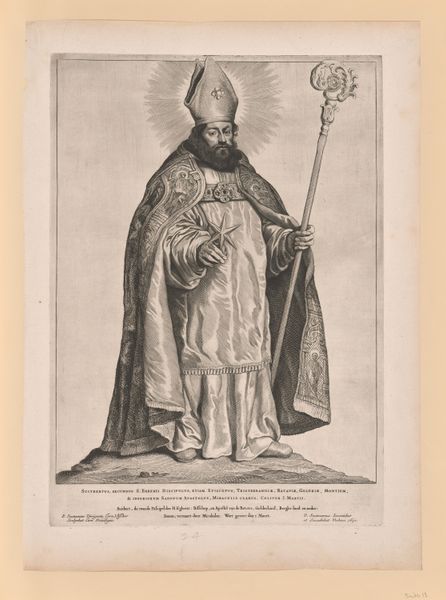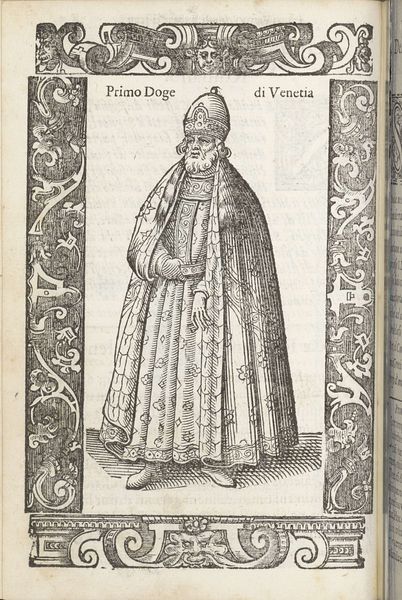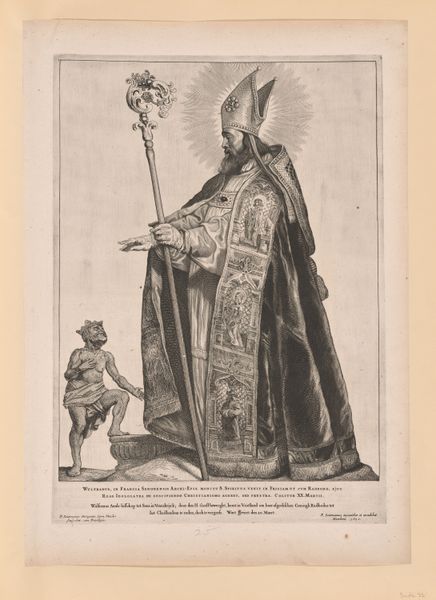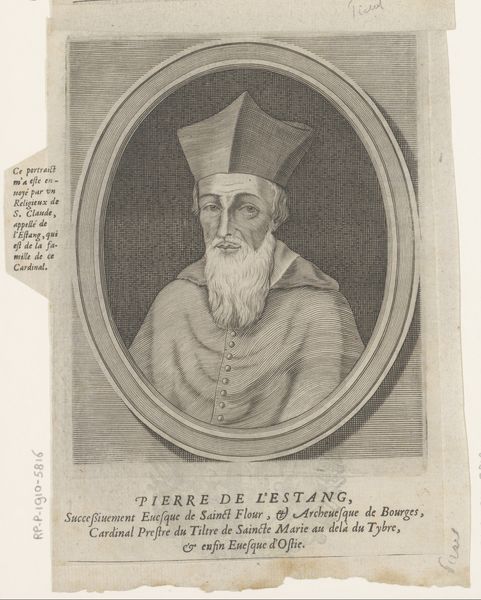
engraving
#
portrait
#
baroque
#
old engraving style
#
islamic-art
#
history-painting
#
engraving
Dimensions: height 145 mm, width 86 mm
Copyright: Rijks Museum: Open Domain
Johann Martin Bernigeroth created this print of Tschanibei Ali Pasja, likely in the mid-18th century. The work encapsulates the West's fascination with the Ottoman Empire, a major political and cultural force. Look at the visual codes in play here. The sitter's elaborate garments, fur-lined coat, and distinctive headdress signify his high status as an Ottoman ambassador. The fan he holds and his dignified pose contribute to an image of imperial grandeur. This image probably circulated as part of a series of portraits depicting foreign dignitaries, reflecting the institutional role of printmaking in disseminating information and shaping public perceptions of international relations. These prints served as a means of understanding, and perhaps exoticizing, foreign cultures within a European context. By studying costume books, diplomatic records, and period publications, we can better understand the complex relationship between Europe and the Ottoman Empire and the politics of representation that shaped these images. The meaning of art depends on the social and institutional context in which it was made and consumed.
Comments
No comments
Be the first to comment and join the conversation on the ultimate creative platform.
